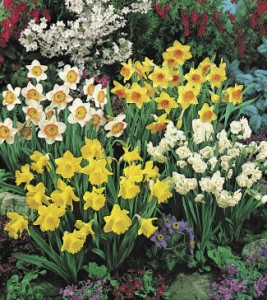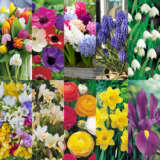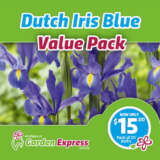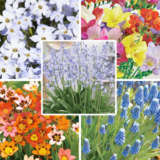Spring Show Bag – 170 Bulbs
Pack of 170
Our Gurus Showbag is the perfect way to give your patio or garden a lift. A selection of our favourite easy to grow and beautiful Spring flowering bulbs that are perfect for pots or gardens.
Our Showbag Collection comprises of 9 of the bestselling varieties from the Garden Express Spring Bulb range, all collected together at a saving of over 70%.
Our Showbag Special contains the following:
- 15 Daffodil Mixed or Yellow
- 10 Dutch Iris Mixed or Dark Blue
- 50 Anemone Mixed
- 5 Spanishbells Blue
- 15 Tritelia Mixed or Light Blue
- 10 Tritonia Cream
- 30 Freesia Mixed
- 20 Ranunculi Mixed
- 15 Grape Hyacinth Blue
A total value of $106.80 at a very special price of only $29.00.
Important Reminder: While we take great care in the realistic representation of our products, many variables such as climatic conditions, natural variation or manufacturing changes may affect the precise appearance of each variety. Generally, images used are of mature specimens whilst supplied stock may be dormant or juvenile plants that will develop with time. The images are intended as a guide only.
- Frost tolerant once established
- Suitable for areas with full sun
- Suitable for areas with part shade
- Ideal in pots or containers
- Suitable to cut for vases
- Spring
- Ideal Growing Regions:
 Cool
Cool Temperate
Temperate Arid
Arid Semi-arid
Semi-arid- View growing regions on the Climate Map
Availability: OUT OF STOCK/OUT OF SEASON! Available to order from mid-January to May, unless sold out.
$106.80 $29.00
Out of stock
Send me an email when this item is back in stock.
- Guarantee
- Delivery Details
- Planting & Growing Guide - Daffodils
- Planting & Growing Guide - Dutch Iris
- Planting & Growing Guide - Anemone
- Planting & Growing Guide - Spring Star
- Planting & Growing Guide - Spanish Bells
- Planting & Growing Guide - Ixia
- Planting & Growing Guide - Sparaxis
- Planting & Growing Guide - Babiana
- Climate Map
Money-Back Guarantee
 GUARANTEE & RETURNS:
GUARANTEE & RETURNS:
At Garden Express, we want to ensure that you have a positive purchasing experience. On the off chance your plants get stuck in the mail or haven’t arrived in the best condition, we ask that you reach out to us promptly with any concerns or issues. You can contact us via email at [email protected] or by phone at 1300 606 242, Monday to Friday EST, contacting us through social media platforms may be less reliable, so we encourage you to use our email.
Please note that it’s important to get in touch with our customer service team within 7 days of receiving your order if you have any concerns as claims regarding arrival condition after 7 days of arrival will not be recognised.
Please also remember not to dispose of any items until you’ve spoken to us, as to be eligible for a replacement, credit, or refund, we may request photos or additional information for any item(s) in question.
If you need to make a return, please contact our Customer Service department via email at [email protected] or by phone at 1300 606 242 for authorisation before proceeding. Once again contacting us through social media platforms may be less reliable, so we encourage you to use our email or phone number for a smoother experience.
It is also important to mention that discounted ‘end-of-season’ stock is sold on an ‘as is’ basis and is exempt from this guarantee. While this stock is generally sound, we recommend planting these items as soon as possible.
Our team packs and dispatches each day based on the best timing of delivery service to your state. This way we can ensure your order is in transit for the shortest time possible.
Delivery is normally via Australia Post with larger orders delivered via StarTrack Express* courier. We service virtually all areas of Australia with only those areas not serviced by these organisations being excluded (e.g. remote islands and Territories such as Christmas Island, Lord Howe Island, Norfolk Island, Cocos Islands, Groote Eylandt). We do not deliver outside Australia but happily deliver orders placed from overseas for Australian delivery. Our regular delivery charge for basic items is $12.50 Australia-wide, regardless of the number of items ordered. Due to their higher freight costs, bulky or heavy products such as roses, large pots and a small number of hard goods have higher delivery charges. The summary of all current delivery options is:
- Basic Postage $12.50: Applies to orders NOT containing Roses, 120mm and larger pots/grow-bags, Bare-rooted Trees, Composting Buckets, nor any items with individually specified delivery charges, all delivered at one time, will incur the normal $12.50 freight charge. These items are referred to as “Basic Items“.
- Roses & Larger Potted Items $16.90: Applies to orders containing bush Roses, 120mm up to 155mm pot/grow-bags, Composting Buckets, together with other products delivered at the same time will incur a $16.90 freight charge. **Please Note: Multiples of these items may incur a larger freight fee depending on the quantity of pots in the order; this will be calculated at the checkout.
- Small Trees & Large Pots $25.50: Applies to orders containing Trixie Fruit Trees, Dwarf Fruit Trees, Lilac Trees, Standard and/or Patio Roses, 160mm up to a 200mm pot/grow-bags, together with other products delivered at the same time will incur a $25.50 freight charge. **Please Note: Multiples of these items may incur a larger freight fee depending on the quantity of pots in the order; this will be calculated at the checkout.
- Trees up to 1m $35.00: Applies to orders containing smaller bare-rooted trees up to 1m in height. Larger items or pots/grow-bags greater than 200mm, together with other products delivered at the same time, will incur a $35.00 freight charge. Remote areas may incur an additional Freight charge but we will notify customers individually if this is the case. **Please Note: Multiples of these items may incur a larger freight fee depending on the sizes and quantity of items in the order; this will be calculated at the checkout.
- Trees 1m up to 1.49m $50.00: Applies to orders containing bare-rooted trees between 1 to 1.49m in height. Bare Rooted trees 1m to 1.5m in height, together with other products delivered at the same time, will incur a $50.00 freight charge. Remote areas may incur an additional Freight charge but we will notify customers individually if this is the case. **Please Note: Multiples of these items may incur a larger freight fee depending on the sizes and quantity of items in the order; this will be calculated at the checkout.
- Trees 1.5m up to 2m $85.00: Applies to orders containing bare-rooted trees between 1.5 to 2m in height. Bare Rooted trees 1.5m to 2m in height, together with other products delivered at the same time, will incur a $85.00 charge. This consists of $65.00 Freight Fee and $20 Oversize Surcharge, as charged by the Courier. Remote areas may incur an additional Freight charge but we will notify customers individually if this is the case. **Please Note: Multiples of these items may incur a larger freight fee depending on the sizes and quantity of items in the order; this will be calculated at the checkout.
- Trees 2m up to 3m $135.00: Applies to orders containing bare-rooted trees between 2 to 3m in height. Bare Rooted trees 2m to 3m in height, together with other products delivered at the same time, will incur a $135.00 charge. This consists of $95.00 Freight Fee and $40 Oversize Surcharge, as charged by the Courier. Remote areas may incur an additional Freight charge but we will notify customers individually if this is the case. **Please Note: Multiples of these items may incur a larger freight fee depending on the sizes and quantity of items in the order; this will be calculated at the checkout.
- Orders containing products with explicitly stated delivery charges will incur charges as detailed in the individual product description.
- Express Post: If you require your order to be sent Express Post, please call our office and we will arrange a quote. Please Note: Quarantine orders cannot be sent using Express Post; our experience is that it will actually delay your order due to the inspection process required for entry into these states.
- Order Split Fee: Some items may be delayed due to climatic or growing habits prevent them from being harvested at the time of being offered for purchase. You will be offered a choice to wait until all items on your order are available or to receive what is currently available for an additional freight charge of $5.00.
- We continue to maintain the simplest form of postage costs for the large variety of products we range, however in occasional circumstances of oversized orders and/or delivery location, the cost of freight can significantly impact delivery of an order therefore we reserve the right to refuse the order or contact the customer to discuss freight options and pricing.
Orders containing products from two different seasons (eg Rose or spring bulb pre-orders) that require separate deliveries will incur two delivery charges at the relevant rates (unless a free freight offer applies). A $5.00 Quarantine Inspection Surcharge applies in addition to the Delivery Charge for orders delivered to Tasmania, Northern Territory and Western Australia due to the increased complexity of quarantine requirements.
As quarantine inspections apply to each delivery, 2 quarantine charges will apply where orders contain products from different seasons. *Please note that if you order large items (eg Patio, Standard or Weeping Roses, Fruit Trees) you must specify a street address for the delivery address. StarTrack Express generally do not deliver to PO Boxes or RSD addresses so your order will be held until a suitable address is obtained. In rural areas, StarTrack may deliver to physical addresses such as general stores that act as Australia Post agencies but we suggest you check with them first. Where ”Free Delivery” vouchers apply to an order, details of the voucher should be entered in the “Your message to us” field. Orders (except Pre-orders) are normally despatched within 7-14 working days from the time of ordering during busy periods. Delivery times may be extended during peak periods (typically following the release of the latest catalogue), extended public holidays, if extreme weather conditions are not suitable for live plant transport or as detailed in the product description.
Individual items may be back-ordered to avoid delaying the delivery of other items. Please allow additional delivery time for orders to Tasmania, Northern Territory and Western Australia due to quarantine restrictions.
Please note: Some orders may not be possible to parts of Australia due to quarantine and some items may carry unique delivery charges. Check full delivery policy.
Common Name: DAFFODILS
Botanical Name: Narcissus
Family Name: Amaryllidaceae
Plant Type: Bulb
Size: 25-40cm H x 15cm W
Planting Time: Autumn
Planting Width: 15cm
Planting Depth: 12cm
Flowering: Late Winter to early Spring
Positioning: Full sun with some protection from wind
General Information: Suitable for Mediterranean and temperate/dry climates. Daffodils will generally only flower from round mature bulbs. If you plant them too shallow they are prone to ‘spilt up’ into side bulbs too readily to reach maturity. Deeper planted bulbs appear to stay healthier, and split less frequently, thus producing more flowers for many years.
Watering: After planting the daffodils give them a thorough watering, but do not water again until the foliage starts to appear. Natural rainfall should be sufficient. Keep bulbs moist during dry spells in autumn and late spring. They do need water during their growth and flowering. Can tolerate frosts.
Fertilising: After flowering has finished, apply light amount of blood and bone or complete plant food. If you have poor soil, sprinkle an all-purpose feed after flowering.
Soil: Well drained soil. Lifting & Storage: If the daffodils are planted in soil with good drainage, the bulbs may be left in the ground and divided every 3 years. If you prefer to dig them up, spent flowers should be removed and foliage allowed to die off naturally. Once the daffodils leaves have died right down, they can be lifted and stored in a cool, dry, airy place.
Pests: Use a little snail bait regularly during growing period.
Tips: They look beautiful mass planted in the garden. Daffodils can range in colours from yellow, white and pink. Smaller varieties need not be planted as deep. In warm climates plant all varieties slightly deeper than recommended.
Different varieties flower at different times so mixed Daffodils flower over a longer period. Can be grown in pots, window boxes.
DAFFODIL QUESIONS AND ANSWERS
Do you have to lift the bulbs every year?
It is not necessary to lift daffodils every year, probably every three years is enough. The best guide is that if a clump is not flowering very well, that is if flowers are becoming fewer and fewer, this means that the clump has become too crowded. You should definitely lift and divide them when they are dormant, usually at the end of summer. Lifting and splitting these bulbs up so they get a new lease of life.
How do you store bulbs?
When you lift daffodil bulbs put them into an open mesh bag like an onion or orange bag and hang in a cool airy spot in the garage or garden shed. Keep them there until March which is the time to plant them in the garden.
Is it really necessary to wait until the leaves have died down before you lift the bulbs?
It is important to wait until the leaves wither before you do anything with the bulbs. After a bulb has put out its flowers it will have shrunk to a tiny size, so if it is to flower next season it will need to be replenished with food in the form of starch. This is the purpose of the leaves, making food to build up the bulb to a decent flowering size. If you cut or mow down the leaves too early the bulb will not have grown enough. Six to eight weeks after flowering has finished you can certainly cut off the withering leaves.
Why didn’t my Daffodils flower?
The two main reasons why Daffodils don’t flower:
- They may be growing in too much shade, they prefer quite a bit of sunlight.
- They may have been planted too shallow, this causes splitting of the bulbs, which are then not big enough to flower, but will still produce leaves.
- The bulb may have been too hot in pots left in the summer sun.
What about feeding bulbs?
To build up a healthy bulb for flowering next season it is a good idea to spread around a well balanced fertiliser. Use a complete fertiliser, not one that contains only nitrogen as this will lead to all leaf growth. A balanced fertiliser such as
one formulated for bulbs or an azalea or camellia food will be fine. The best time to feed is just as the flowering is finishing and the leaves are dying off.
Common Name: DUTCH IRIS
Botanical Name: Iris x hollandica
Family Name: Iridaceae
Plant Type: Bulb
Size: 50-70cm H x 10cm W
Planting Time: Autumn
Planting Width: 10cm Depth: 10cm
Flowering: Spring
Positioning: Full sun with some protection from wind
General Information: Suitable to all climates except tropical. Grows best in cool to cold climates but does tolerate warmer areas.
Watering: Water well after planting but don’t water again until foliage emerges. Give thorough weekly watering during growth and flowering, but once it starts to die down stop watering.
Fertilising: If the soil has been well prepared fertilising isn’t necessary. If soil is of poor quality blood and bone can be applied after leaves begin to emerge.
Soil: Well drained soil.
Lifting & Storage: Bulbs may be left undisturbed for years. If lifting bulbs do so once the foliage has died down completely and store in a warm and airy position.
Pests: Watch for aphids and spray with insecticide if necessary.
Tips: Dutch Iris rot easily if over watered or if soil is poorly drained.
Common Name: ANEMONE
Botanical Name: Anemone coronaria
Family Name: Ranunculaceae
Plant Type: Bulb Size: 30cm H x 10cm W
Planting Time: Autumn
Planting Width: 15cm Depth: 4cm
Flowering: Late Winter to Spring
Positioning: Full Sun
General Information: Anemones have wonderful rich and bright colours, and for picking as a cut flower they are hard to beat. They prefer to be massed in a sunny position. Suitable for Arid, Temperate and Mediterranean climates. Fully hardy – can handle all conditions.
Soil: Need well-drained soil.
Watering: Water well after planting, then weekly until leaves appear. Once up and growing, only water to supplement rainfall.
Fertilising: Light organic or chemical fertiliser at planting time. Liquid fertilise regularly once buds start to form.
Pests: Bait snails when buds appear. No other specific pest or disease problems are known.
Lifting & Storage: Best treated as annual or bi-annuals – new bulbs planted every 1 to 2 years.
Tips: To kick start the growing process, soak the bulbs in a bowl of water for about an hour before planting. Need protection from strong winds. Over watering will rot bulbs. Plant up to double the recommended depth in warm climates. Point of bulb faces down.
Common Name: SPRING STAR
Botanical Name: Ipheion uniflorum
Family Name: Alliaceae
Plant Type: Bulb
Size: 15-20cm H x 7-10cm W
Planting Time: Autumn
Planting Width: 7cm Depth: 4cm
Flowering: Late Winter to Spring
Positioning: Full sun to light shade.
General Information: Suitable for all climates except tropical. Frost tender.
Watering: Only required through dry winter spells. Can become water logged in winter, but will thrive in well drained soil.
Fertilising: Prepare soil with complete fertiliser or animal manure. A yearly top-dressing with a complete fertiliser is sufficient to maintain excellent growth and multiplication.
Soil: Thrives in most soil types.
Lifting & Storage: Spring star can be left undisturbed for many years, however after some time the clumps may become too thick in which case they can be dug up and divided. If they do need to be lifted wait until the leaves turn yellow and lay flat.
Pests: Spring star are extremely resistant to both pests and diseases. Bait slugs and snails during growing period if necessary.
Tips: When grown under trees or shrubs, plants will become naturalized. Spring star make striking borders and are great in rock gardens. When planting, remember to allow some extra space for multiplication, which will occur quite rapidly.
Common Name: SPANISH BELLS Also known as Scilla & Blue Bells
Botanical Name: Hyacinthoides hispanica
Family Name: Hyacinthaceae
Plant Type: Bulb
Size: 40-45cm H x 10cm W
Planting Time: Autumn
Planting Width: 10cm Depth: 8cm
Flowering: Late Spring
Positioning: Will do best in a shaded area, or in a position that receives morning sun and afternoon shade.
General Information: Suitable for temperate and Mediterranean climates. Does best in cooler climates with temperatures down to 0°C.
Watering: Requires regular soakings in spring, but during summer can be kept dry.
Fertilising: Work compost, leaf meld or rotted manure through the soil before planting, this will increase fertility and improve drainage, then fertilise every winter when foliage appears.
Soil: Well drained, rich in organic matter.
Lifting & Storage: Generally a carefree plant that you can forget about, Spanish Bells enjoy being left to thicken into clumps. Digging may be necessary every 2-3 years or so to divide clumps into smaller groups. If digging is required do so in January.
Pests: Pests and disease are rare.
Tips: To tell which way to plant them, look for scales folded around each other, this is the top and should be planted with the top facing up. Once you have planted them, add a 10cm thick layer of mulch to insulate. Each spring remove
spent flower stems. One of the latest Spring flowering bulbs.
Common Name: IXIA Also known as Corn Lily
Botanical Name: Ixia maculata
Family Name: Iridaceae
Plant Type: Bulb
Size: 50-70cm H x 10cm W
Planting Time: Autumn
Planting Width: 5-10cm Depth: 5cm
Flowering: Late Spring to early Summer
Positioning: Full Sun
General Information: Suitable for most conditions, excluding tropical climates, dry inland and warmer higher areas. Tolerates temperatures down to 0°C.
Watering: Water well in spring but allow to dry off after flowering.
Fertilising: Animal manure or compost should be worked into the soil before planting.
Soil: Well drained soil.
Lifting & Storage: Ixia can generally be left undisturbed for many years however if clumps do become too thick they can be lifted once foliage turns yellow and replanted in Autumn.
Pests: Spray for insects and bait snails when buds appear.
Tips: Makes fantastic cut flowers. If soil isn’t particularly well-drained sprinkle some sand under them before planting.
Common Name: SPARAXIS
Also known as: Harlequin
Botanical Name: Sparaxis tricolor
Family Name: Iridaceae
Plant Type: Bulb
Size: 25-40cm H x 10cm W
Planting Time: Autumn
Planting Width: 5-10cm Depth: 6cm
Flowering: Spring
Positioning: Full Sun
General Information: Suitable for all climates. Sparaxis generally grow with ease but growth may be affected in areas where the soil freezes.
Watering: During their dormancy phase Sparaxis are not water hungry. Once growth appears start watering, and even then only give an occasional deep watering.
Fertilising: Six weeks after shoots appear top dress with a complete fertiliser.
Soil: Well drained soil.
Lifting & Storage: When clumps become too thick, dig them up once the foliage has turned yellow, clean and store until autumn.This may only be needed every 4-5 years.
Pests: Generally pest free but it may be beneficial to spray for insects and bait snails when buds appear.
Tips: In very cold areas they can be lifted in autumn and replanted in spring. They can be grown in pots and make great cut flowers.
Common Name: BABIANA
Also known as: Baboon Flower
Botanical Name: Babiana stricta
Family Name: Iridaceae
Plant Type: Bulb
Size: 15-25cm H x 5-10cm W
Planting Time: Autumn
Planting Width: 10cm Depth: 8-10cm
Flowering: Spring
Positioning: Full Sun
General Information: Suitable for all climates. Babiana can tolerate very cold conditions, although protection from heavy frost is required. They will also tolerate dry conditions.
Soil: Rich and well drained.
Watering: May need additional watering when close to flowering. Can tolerate dry soil much better than over-watered soil, which can cause stress and lead to disease.
Fertilising: Will respond to a light top dressing and all-purpose fertiliser in winter.
Lifting & Storage: Babiana grow well in thick clumps and should be dug up every couple of years. The bulblets, which form above the bulb, can be saved for faster multiplication. Store in a dry and well ventilated location.
Pests: Disease and pest resistant.
Tips: Plant pointy end facing up.
Legend
Establish which coloured region you live in and then consider the varieties listed as typically suited to that area. The Australian Climate Guide map is intended as a guide only as climatic conditions vary between specific locations. Factors such as local altitude, wind and the proximity of hills, mountains and bodies of water can cause variations from the generalised climate map. Note also that although a plant may be listed as suitable for a particular region, it may still require protection from extremes such as frost or strong winds. You should also consider its requirements for sun, shade and water.
Remember that you can often extend the range of plants that you can grow by creating micro-climates within your garden. Planting under trees, beside brick walls or in the shelter of a building, on high or low points in the garden can all have an effect. Even planting by a pond or surrounded by rocks can be used to advantage. Part of the joy of gardening can be experimenting and nothing is more pleasing that achieving success with a plant that is not usually seen in your area.
The map is based on Australian Bureau of Meteorology 30 year climatology data from 1961-1990. The zones are based on both temperature and humidity:
 Tropical – hot humid summer .
Tropical – hot humid summer . Mild Tropical – warm humid summer
Mild Tropical – warm humid summer Semi-arid – hot dry summer, cold winter
Semi-arid – hot dry summer, cold winter Arid – hot dry summer, cold winter
Arid – hot dry summer, cold winter Temperate – warm summer, cool winter
Temperate – warm summer, cool winter Cool – mild-warm summer, cool winter
Cool – mild-warm summer, cool winter
Looks great in the garden with...
-
Sale!

Mega Gardeners Favourite Collection – 195 Bulbs
Pack of 190$129.80$75.00 Sold/Out of Season -
Sale!

Freesia Giant Hybrid Collection
Pack of 40$39.60$30.00 Sold/Out of Season -

Flower Fest Value Pack – Dutch Iris Dark Blue
Pack of 20 $30.00 Sold/Out of Season -
Sale!

Throw & Grow Collection
Pack of 205$99.70$59.00 Sold/Out of Season


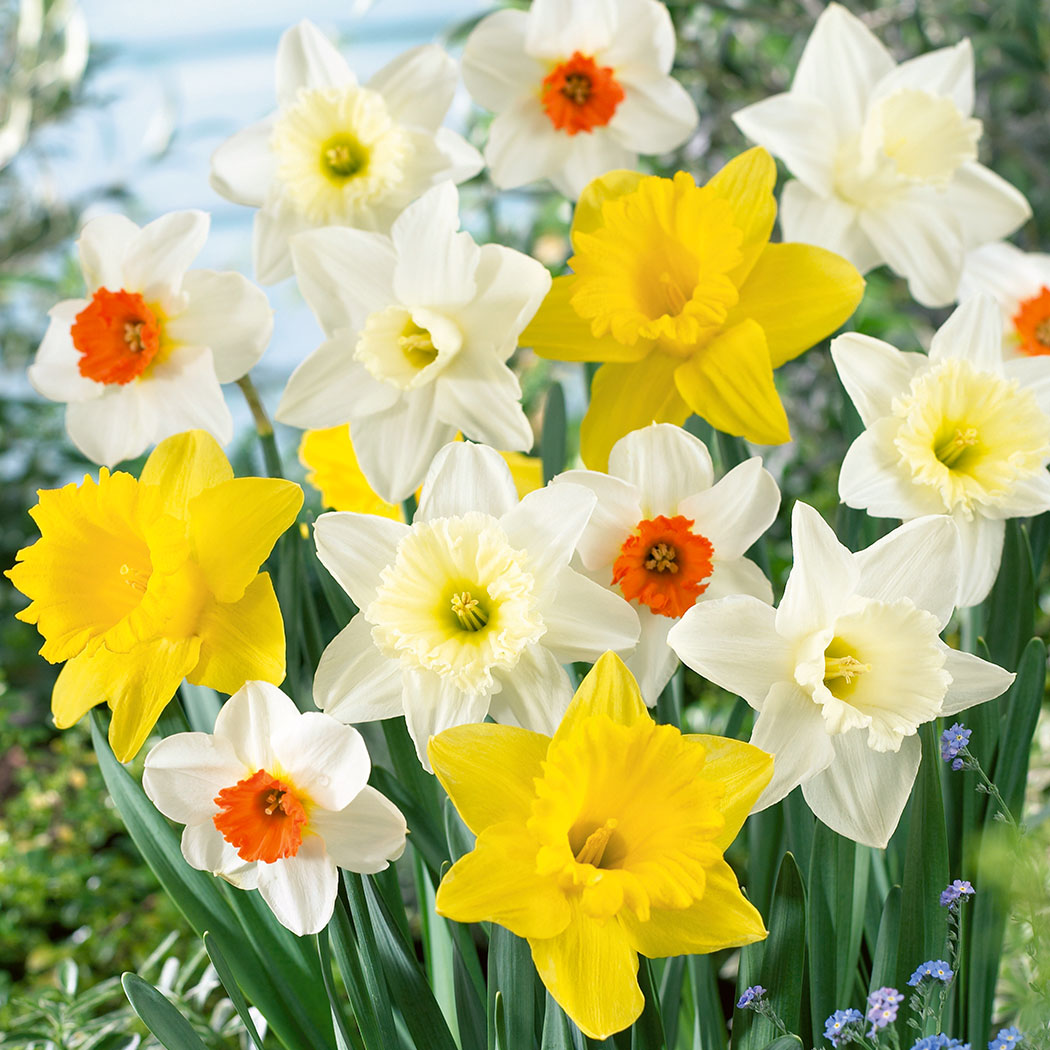
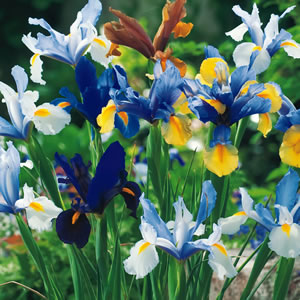
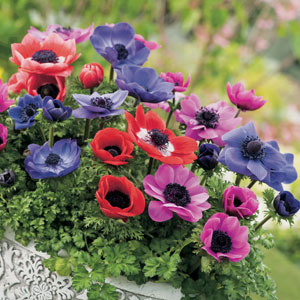
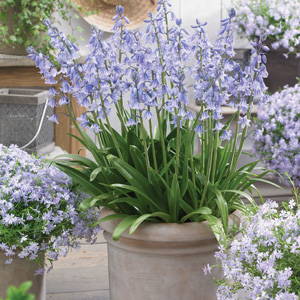
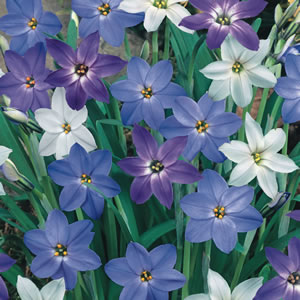
.jpg)
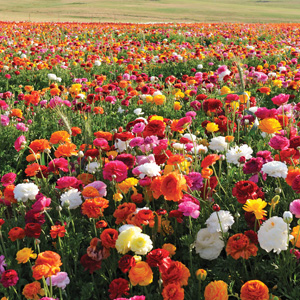
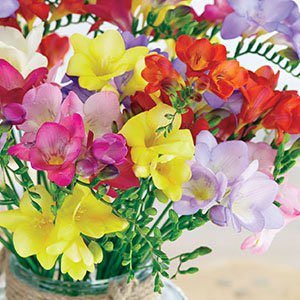
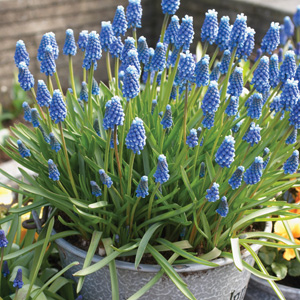
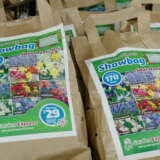
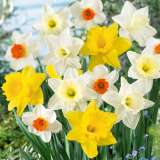
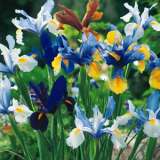
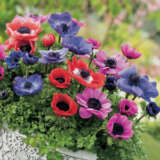
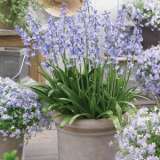
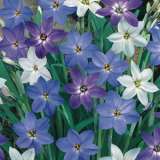
-160x160.jpg)
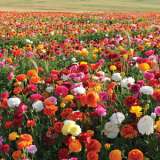
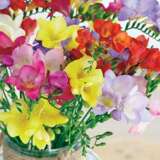
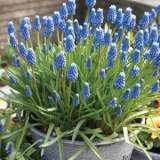
 Cool
Cool Temperate
Temperate Arid
Arid Semi-arid
Semi-arid